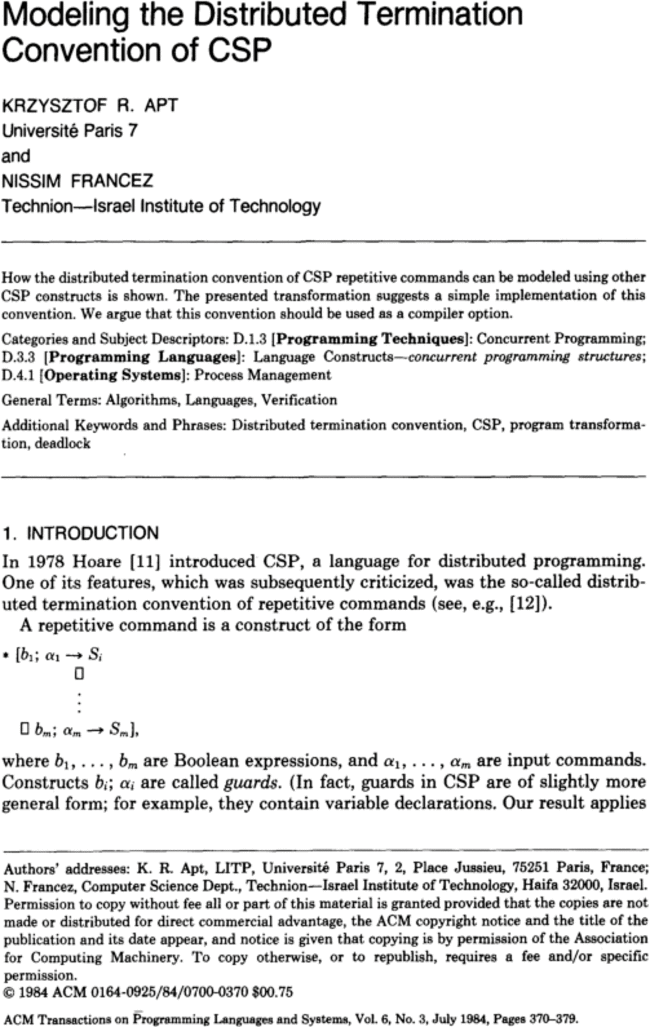Cited By
View all- Bougé L(2022)On the existence of symmetric algorithms to find leaders in networks of communicating sequential processesActa Informatica10.1007/BF0026358425:2(179-201)Online publication date: 10-Mar-2022
- Graf SPeled DQuinton S(2011)Monitoring distributed systems using knowledgeProceedings of the joint 13th IFIP WG 6.1 and 30th IFIP WG 6.1 international conference on Formal techniques for distributed systems10.5555/2022067.2022079(183-197)Online publication date: 6-Jun-2011
- Graf SPeled DQuinton S(2011)Monitoring Distributed Systems Using KnowledgeFormal Techniques for Distributed Systems10.1007/978-3-642-21461-5_12(183-197)Online publication date: 2011
- Show More Cited By




